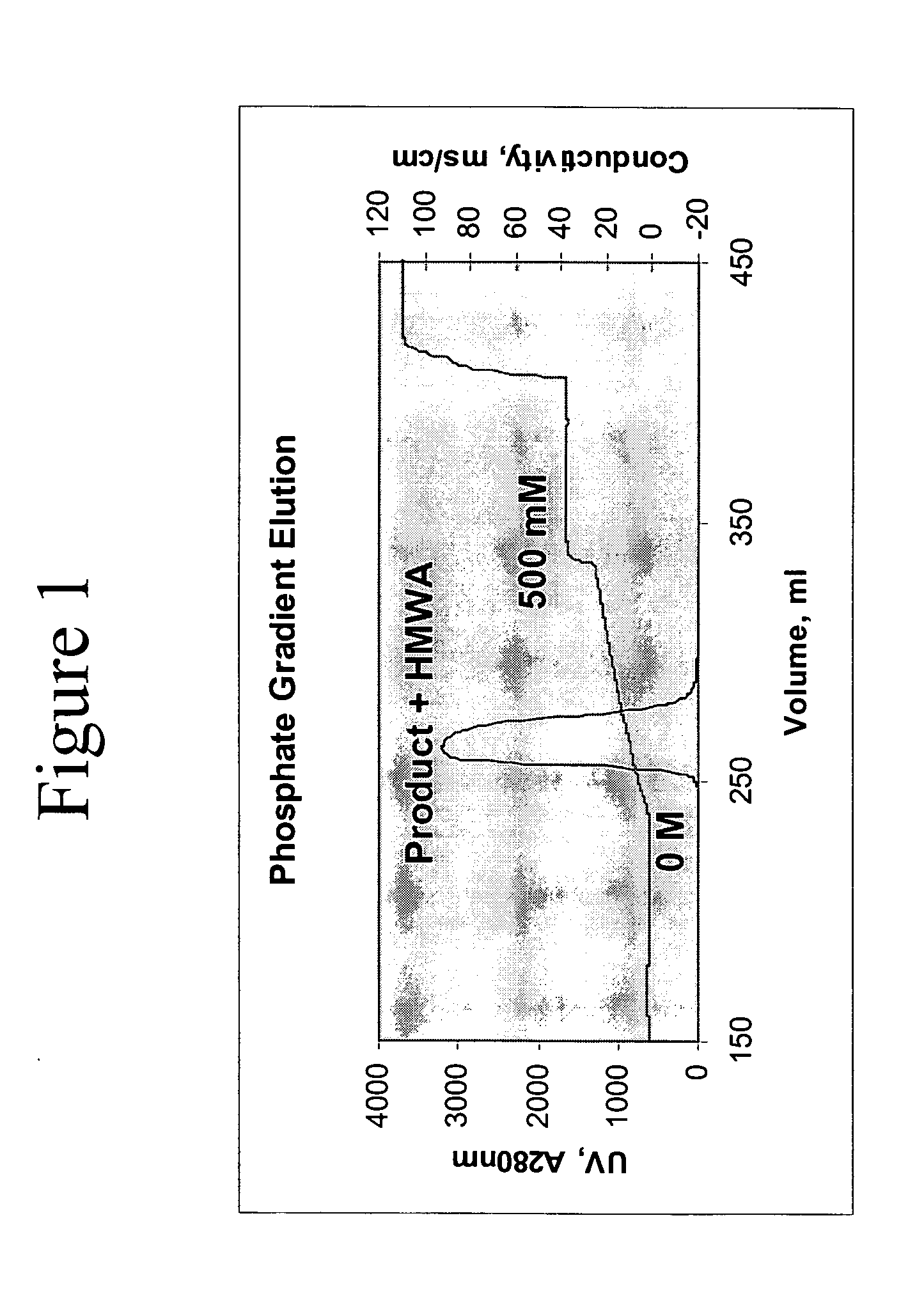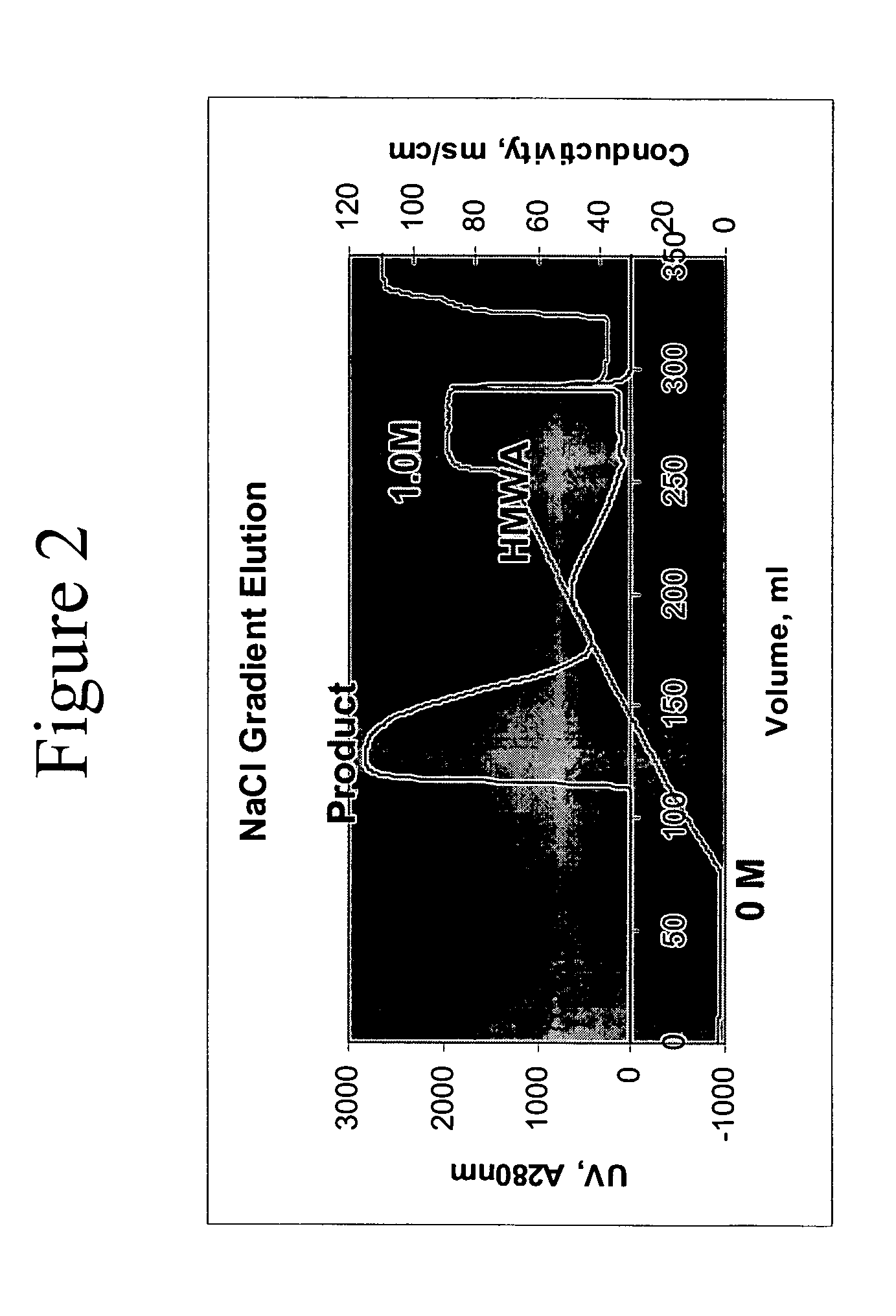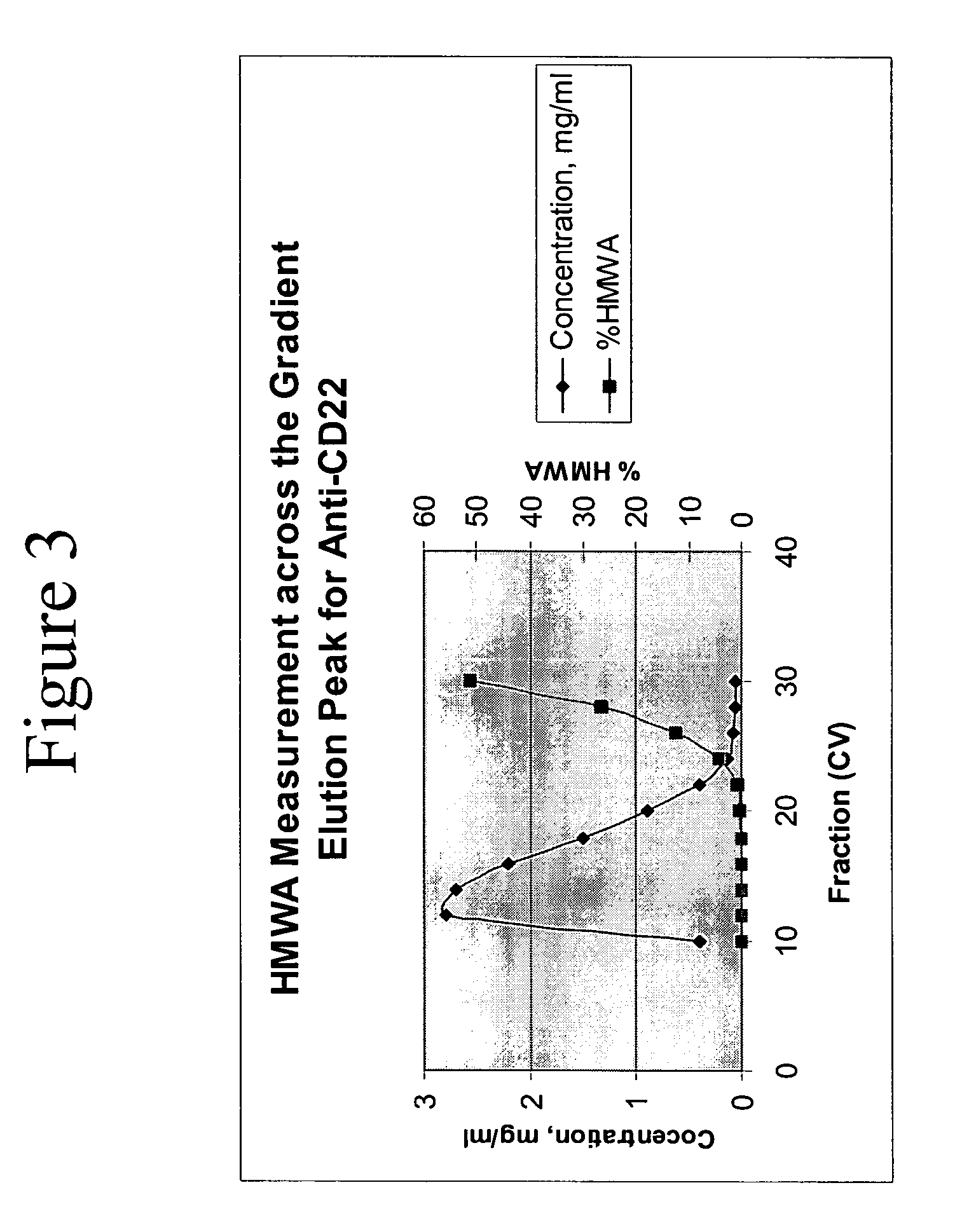Removal of high molecular weight aggregates using hydroxyapatite chromatography
- Summary
- Abstract
- Description
- Claims
- Application Information
AI Technical Summary
Benefits of technology
Problems solved by technology
Method used
Image
Examples
example 1
Purification of an Anti-GDF-8 Antibody
[0071] The purification process outlined below was developed for an anti-GDF-8 monoclonal antibody (referred to herein as “Myo-29”). The Myo-29 antibody is an IgG1 subtype antibody and has a pI of approximately 8.1. The purification process was comprised of three chromatographic steps (Protein A affinity, anion exchange, and hydroxyapatite), a viral inactivation step, and an ultrafiltration / diafiltration step to concentrate and exchange the product into a final buffer. All steps were performed at 18 to 25° C., except the Protein A chromatography step, which was run at 2 to 8° C.
[0072] The purification process can be normalized for any scale. Linear flow rates listed are independent of column diameter and loading ratios are in mass per unit volume. The Protein A chromatography step can be cycled multiple times per batch to accommodate varying amounts of cell culture titer in the harvest bioreactor. Each cycle is considered a separate unit opera...
example 2
cHA Purification of an Anti-GDF-8 Antibody Preparation Using Type I Resin
[0093] The Myo-29 antibody was also successfully purified using Type I cHA resin, 40 μM particle size, packed in a 3.1 L column. The column was equilibrated with 3 column volumes of equilibration buffer 1 (0.3 M sodium phosphate, 1.0 M NaCl, pH 6.8). A second equilibration step was conducted with 4 column volumes of equilibration buffer 2 (5 mM sodium phosphate, 50 mM NaCl, pH 7.2). Partially purified media from an anion exchange purification step was loaded onto the resin at a load challenge of 35 mg / ml and at a flow rate of 1.5 cm / min. The cHA column was washed with 3 column volumes of a wash buffer (5 mM sodium phosphate, 50 mM NaCl, pH 7.2). The Myo-29 antibody was eluted from the cHA resin using 6 column volumes of an elution buffer (3 mM sodium phosphate, 1.0 M NaCl, pH 7.2).
[0094] The cHA column was stripped with strip buffer (0.3 M sodium phosphate, 1.0 M NaCl, pH 6.8) and regenerated with regeneratio...
example 3
cHA Purification of an Anti-CD22 Antibody Preparation and an Anti-Abeta Antibody Preparation Using Type I Resin
[0096] The cHA purification process described in Example 2 was also able to sufficiently remove HMWA from both an anti-CD22 and an anti-Abeta antibody preparation. The process used was similar to that described in Example 2, with the exception that the purified antibody monomer was gradient-eluted in 15 column volumes of elution buffer (3 mM sodium phosphate, 1.5 M NaCl, pH 7.2).
[0097] As demonstrated in Table 6, cHA purification using Type I resin was able to decrease HMWA in the anti-CD22 antibody preparation to 0.5% and in the anti-Abeta antibody preparation to below the limit of detection. Further, the cHA purification step was able to remove Protein A contaminants from the antibody preparation.
TABLE 6HMWA clearance and antibody monomer yields using Type I resin inpurification of anti-CD22 and anti-Abeta antibody preparationsSample% HMWA% Monomer YieldProtein A (ppm...
PUM
| Property | Measurement | Unit |
|---|---|---|
| Fraction | aaaaa | aaaaa |
| Fraction | aaaaa | aaaaa |
| Fraction | aaaaa | aaaaa |
Abstract
Description
Claims
Application Information
 Login to View More
Login to View More - R&D
- Intellectual Property
- Life Sciences
- Materials
- Tech Scout
- Unparalleled Data Quality
- Higher Quality Content
- 60% Fewer Hallucinations
Browse by: Latest US Patents, China's latest patents, Technical Efficacy Thesaurus, Application Domain, Technology Topic, Popular Technical Reports.
© 2025 PatSnap. All rights reserved.Legal|Privacy policy|Modern Slavery Act Transparency Statement|Sitemap|About US| Contact US: help@patsnap.com



